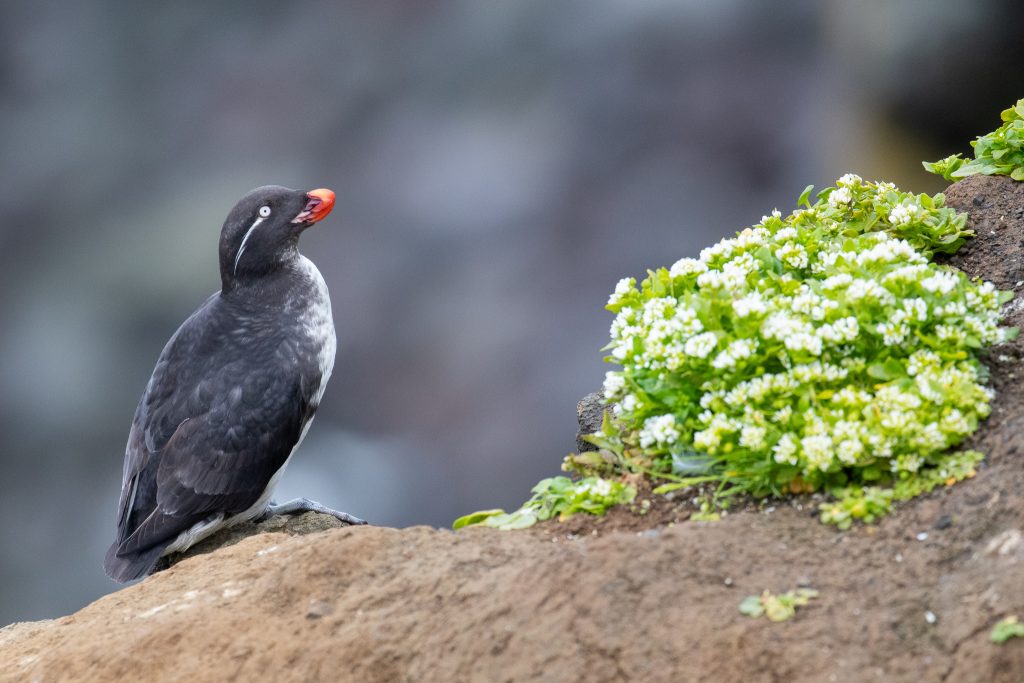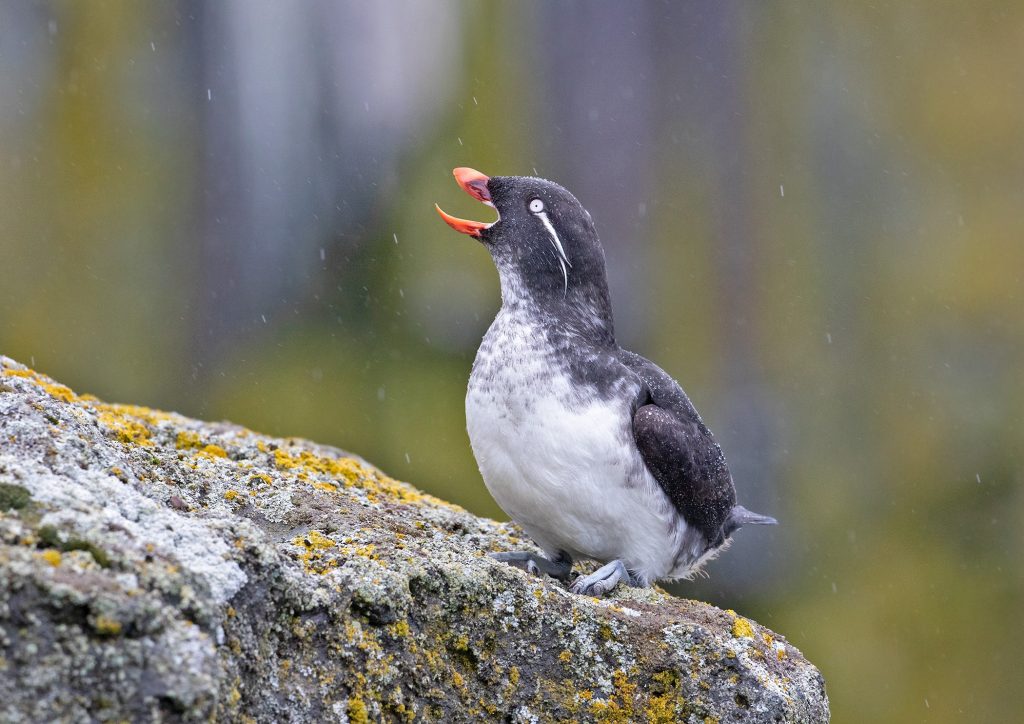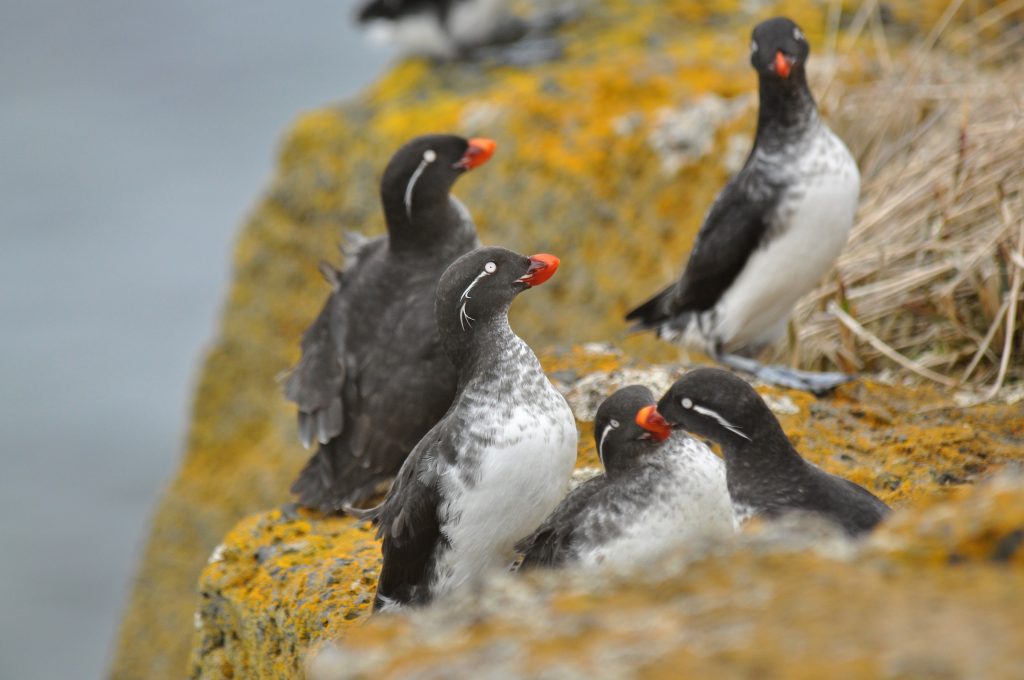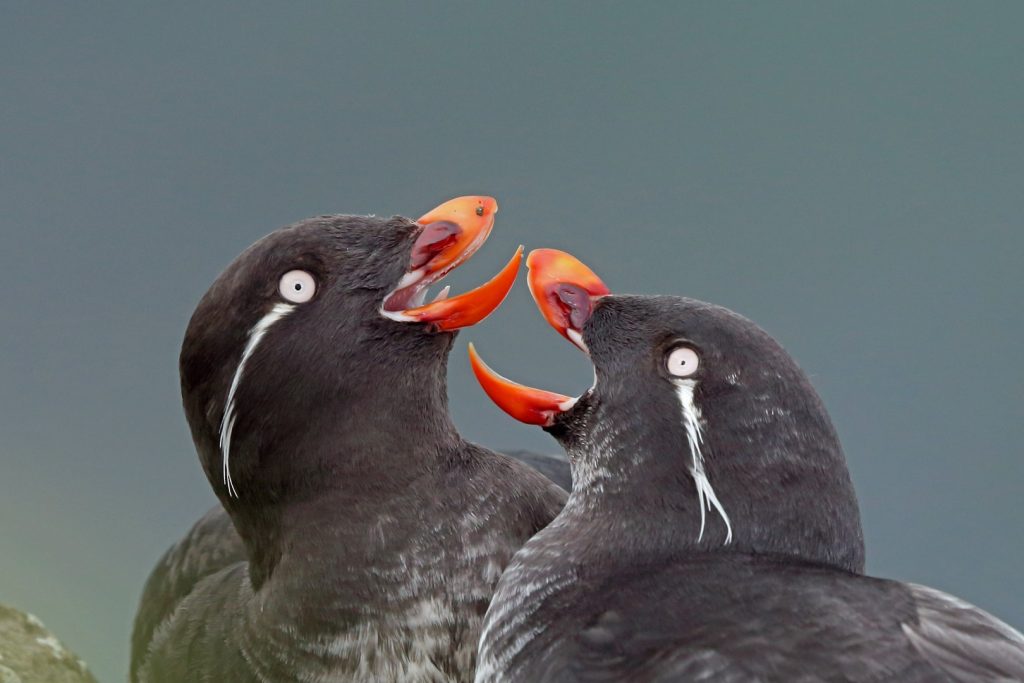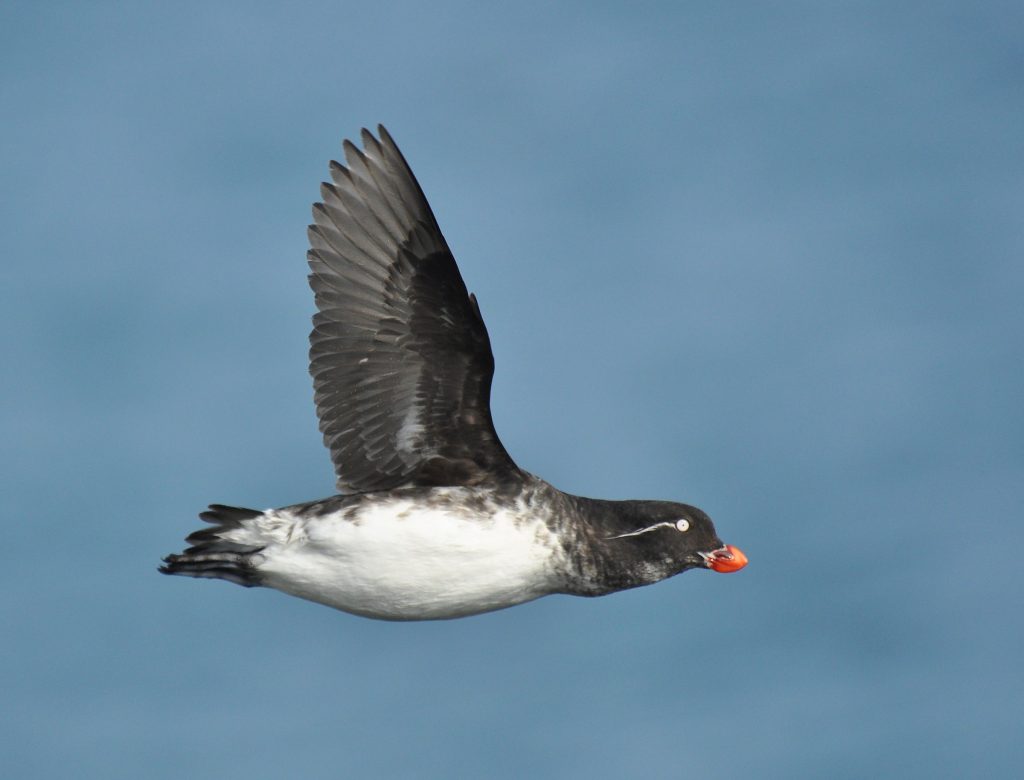An abundant breeding species that is easily found from May through much of August, this species becomes much more difficult to see locally in fall and winter. Large numbers typically begin to return to the islands in late April with the full breeding population present by late May and early June. Nesting occurs in June and July with a population estimate of around 75,000 pairs on St. George, 10,000-20,000 pairs on St. Paul, and a small number on both Otter and Walrus Islands. Most pairs complete the nesting cycle in late July to mid-August with a corresponding decline in the number of birds present beginning at that time. The majority of individuals have left the cliffs by August 20th, though small numbers may remain into the first week of September. From late August on, this species is most likely to be found on the water around the islands though typically in small numbers and not on a daily basis. By late September and October, this species is rarely seen from land (perhaps once or twice a week) but numbers may still be present in surrounding waters. During the winter sightings are made occasionally depending on weather and ice conditions with large numbers found during die-offs in some years or pushed inshore by strong weather systems.
